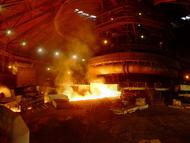Timing is Everything - ORIGINAL CONTENT
- By:
- Edward A. Reid Jr.
- Posted On:
- Aug 30, 2022 at 7:00 AM
- Category
- Energy Policy, Climate Change
Timing is not a particular issue in market-driven product, process or service transitions. The existing technology applications remain in the market and the new technology applications enter the market and replace them over time. The new technology applications might experience supply constraints early, depending on the consumer demand for the new technology, but the existing technology remains available if required.
However, in the case of non-market driven product, process or service transitions, timing can become a critical issue. This is currently the case with the government-driven transition to “net-zero” CO2 emissions and an “all-electric everything” energy market. The federal government has established hard goals for elimination of coal-fired electric generation (2030), elimination of all fossil-fueled electric generation (2035) and elimination of all fossil-fueled energy end uses (2050). Meeting these hard goals without major economic disruption requires that the new products, processes and services that would replace the existing fossil-fueled applications be fit for their intended uses and available in sufficient quantities to replace existing applications and satisfy the demands of new applications.
Replacing coal-fired generation over the next 8 years would require installation of renewable generation with at least twice to more than 3 times the rating plate capacity of the coal-fired generators, depending on the renewable generators selected for the application, plus the long-duration storage infrastructure necessary to make the renewable generation capacity dispatchable. That long-duration storage is not currently commercially available, and it is not certain that it would be available in sufficient quantities to support renewable plus storage replacement of all of the existing coal-fired generation by 2030. In the absence of such storage, the coal-fired powerplants cannot be shut down without causing major economic disruption due to grid unreliability.
Replacing natural gas generating plants by 2035 faces the same challenges regarding the availability of long-duration storage; and, those challenges would be even greater if current nuclear generation stations are not permitted to continue operating or are not replaced.
The economy will face additional challenges, beginning immediately but growing most rapidly in the period from 2035 to 2050 as all remaining fossil-fueled end uses are transitioned to electric end uses. This process has already begun with the introduction and incentivization of electric vehicles, but would accelerate rapidly after 2035 due to federal prohibitions on the manufacture of vehicles with internal combustion engines. The process has also already begun with local prohibitions on the use of natural gas in new buildings, which then requires all-electric construction.
Finally, the renewable plus storage grid must also grow to match the energy demands of a growing population and economy and, must do so economically.
There are current fossil-fueled industrial processes for which there are currently no electric alternatives, including iron and steel production and the calcining of limestone to produce cement. These processes, in particular, are essential to the production and installation of renewable generators, so acceptable alternative processes must be developed and tested. Offshoring the current processes would accomplish nothing from a climate change standpoint, since the CO2 emissions would still occur.


